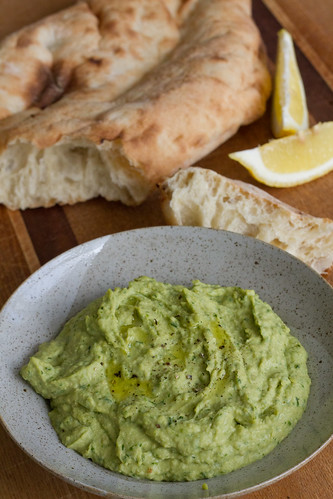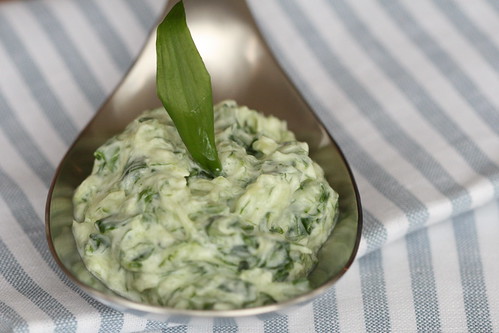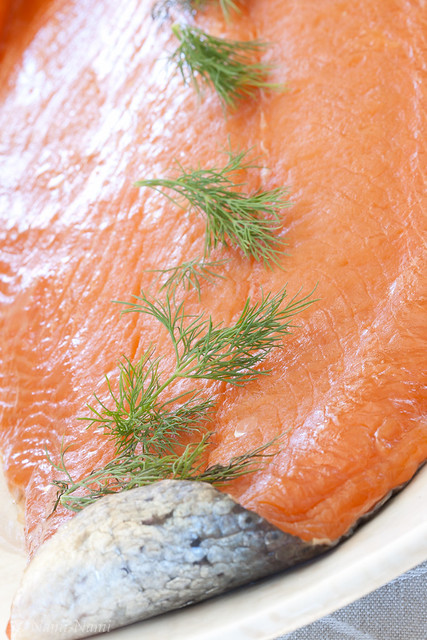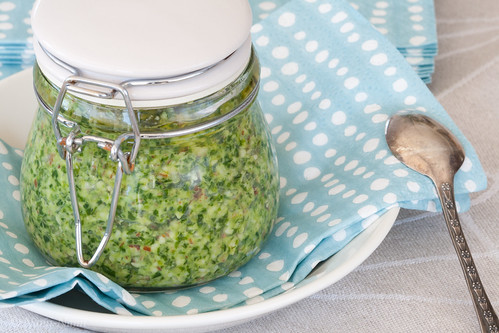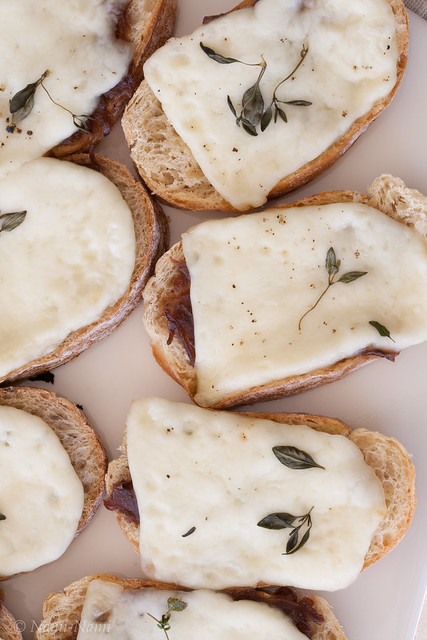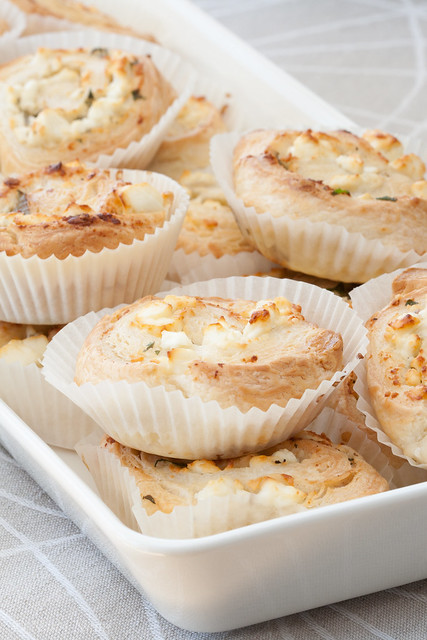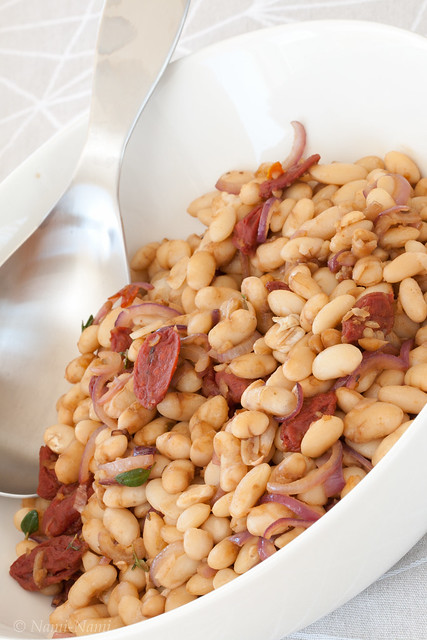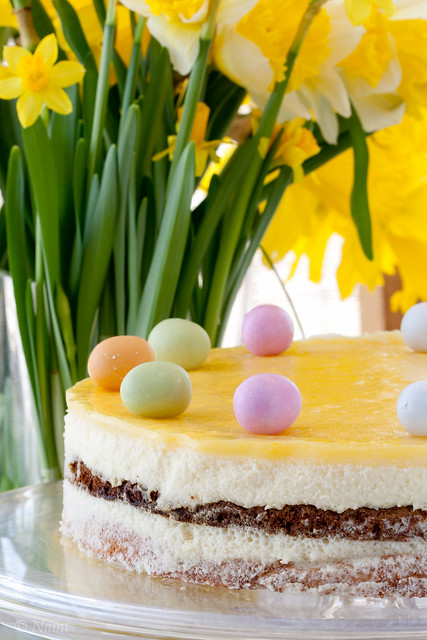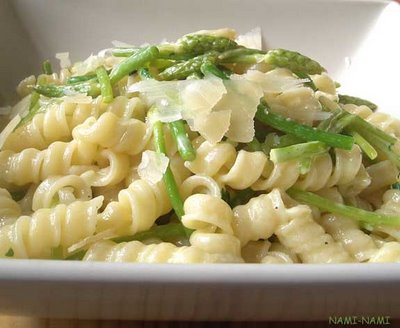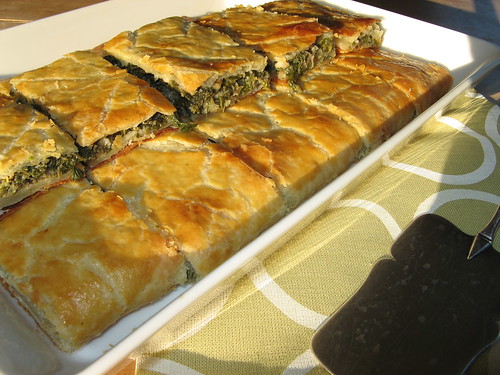
Last Sunday we had a full house again.
28 people, including the kids, celebrating the Spring and enjoying the traditional Nami-Nami Easter brunch. It was a gorgeously sunny and pleasant day, and we ate
al fresco.
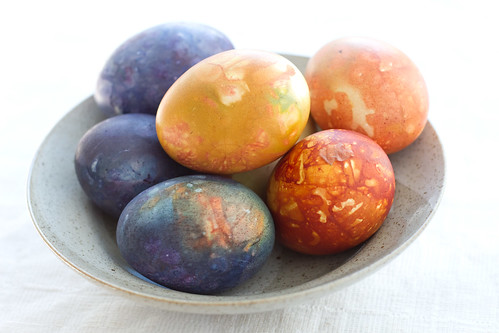
First,
the eggs. To be honest, we only dyed them
after the party, but they're still part of the Easter brunch in a way. We used the Estonian way of dyeing eggs with onion skins (
read all about it here) for the yellow-brown eggs, and frozen blueberries for the blue eggs. I think they turned out gorgeous, and the kids loved them!
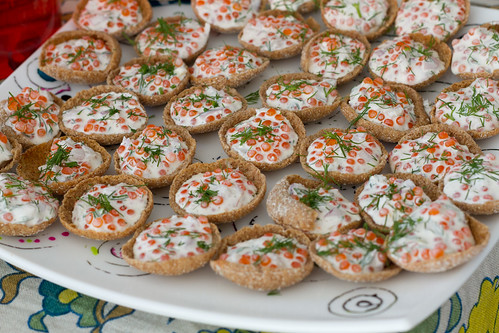
Small rye cups were filled with salmon roe and sour cream (also known as creamy caviar dressing,
recipe here).
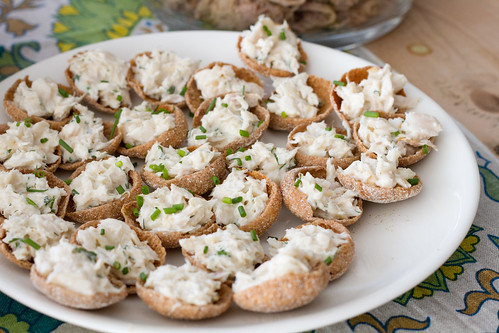 Smoked fish salad,
Smoked fish salad, spiked with some horseradish (I used hot-smoked hake).
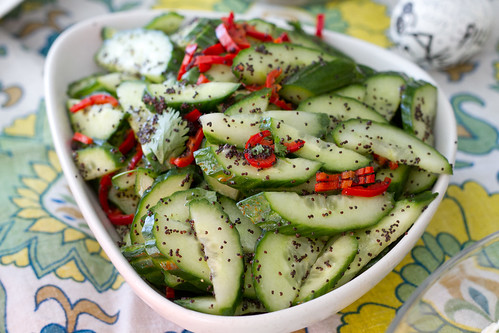 Ottolenghi's cucumber and poppyseed salad
Ottolenghi's cucumber and poppyseed salad - always festive, yet simple to make. I omitted the sugar this time and didn't miss it at all!
 Marinated fresh sprats
Marinated fresh sprats from the Ristemäe talu stand at my local farmers' market, Viimsi Taluturg.
 Pasta and sausage salad
Pasta and sausage salad, very Estonian and always popular with older kids.
 Puff pastry canapés
Puff pastry canapés with sun-dried tomato pesto and black olive filling.
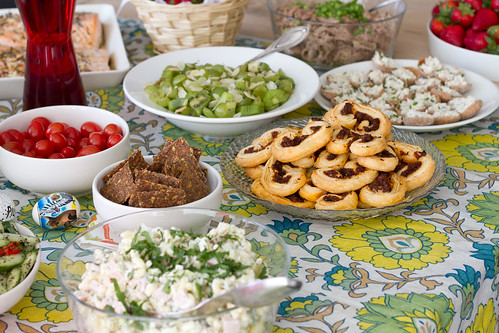
Another view of the table.
 Wild garlic
Wild garlic is in season, so I made some
crostini with ricotta and wild garlic spread, served with Estonian cured pork filet.

I did all the prep work on Sunday morning (the kids make sure we wake up rather early :)). However, I did slow-cook a huge Boston butt (2,5 kg) on the previous day, serving the pulled pork at the brunch. The recipe was adapted from
this Finnish magazine.
 Rosemary and Garlic Roasted Salmon
Rosemary and Garlic Roasted Salmon a la
In Sock Monkey Slippers. It was a huge salmon, so there was plenty for everybody.
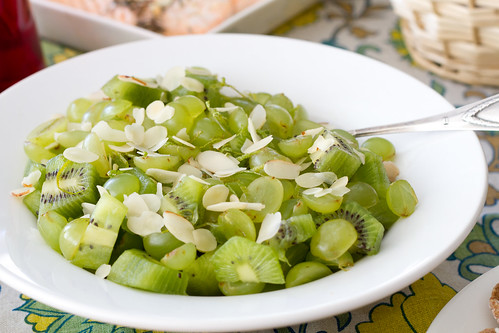 Green fruit salad
Green fruit salad looked inviting and spring-like. I omitted the maple syrup, as the kiwis and grapes were sweet enough, and sprinkled some almond slices on top for some extra bite.
Over the years I've got better in delegating. Some friends brought imported strawberries, some oranges for the freshly squeezed orange juice, some brought wine. Some friends volunteered to bring food. And they brought some wonderful dishes.

My friend
Liina baked a fantastic mutabak.
 Piret
Piret brought along a typical
Estonian mushroom salad (wild mushrooms, onion, sour cream, seasonings).
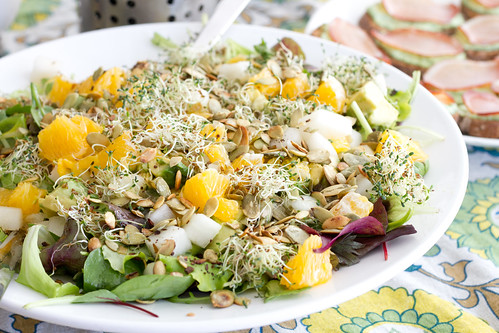
Our friend
Kristiina makes
wonderful salads, here's what she brought along this year.
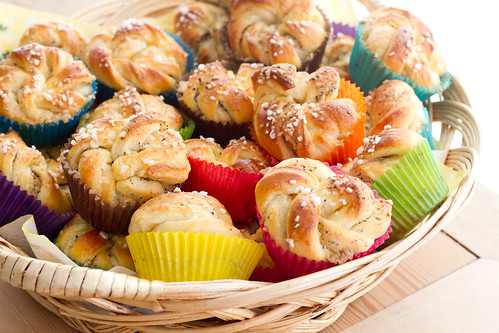
And her husband
Paavo baked a big batch of
Swedish cardamom twists.

I had also made a small cake, namely
gluten-free buckwheat hearts with mocha glaze. Our son Aksel is somewhat sensitive to wheat (and hazelnuts), so I try to make sure there's something on the table that doesn't make his skin all itchy. (If you need more buckwheat inspiration, then check out
my buckwheat recipe board on Pinterest.)
Here's another look at the table:
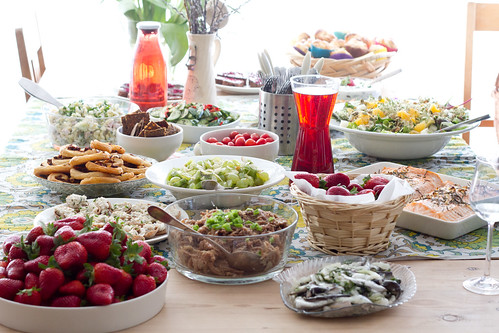 We drank
We drank Prosecco and various wines, cold-brewed hibiscus water (the bottle on the left) and black aronia cordial (the jug on the right). Coffee and tea later.
What did you have for Easter? I'd love to hear more in the comments!
See overviews of our previous Easter brunches:
Easter brunch 2013, featuring blood orange Mimosas,
avocado and smoked salmon salad, cucumber bites with cream cheese, small
tattie scone rounds with
smoked salmon mousse,
deviled beet eggs,
chorizo meatballs, a great carrot and cream cheese cake, roasted cauliflower, and much more.
Easter brunch 2012, featuring crostini with dill-marinated pork tenderloin,
Ms Marmite Lover's focaccia shots, marinated olives, Estonian mushroom salad, cold-smoked salmon, a delicious paskha,
cardamon-scented apricot and curd cheese cake, and much more.
Easter brunch 2011, featuring a pretty (imitation) snow crab salad, beet quail eggs, two types of home-made Estonian cheese "sõir", smoked salmon with horseradish dip, wild garlic (ramp) pesto with almonds, crostini with white cheese and red onion jam, puff pastry rolls with feta, white bean salad with chorizo,
Limoncello, coconut and white chocolate tart.
Easter brunch 2010, featuring spinach and hot-smoked salmon salad with quail eggs, green beans and asparagus,
Marika Blossfeldt's
quinoa salad with beets and fennel, savory cheesecake with goat cheese and chives,
Ottolenghi's cucumber salad with poppyseeds, bean salad with lemon and parsley, Baltic herring with cherry tomatoes and herbs, Estonian home-made cheese "sõir", paskha, traditional Simnel cake, and another cake with coconut, lemon curd, elderflower cream and lemon balm.
Easter brunch 2009, featuring bright green pea soup shots,
zucchini rolls stuffed with goat cheese, hazelnuts, figs and mint, peppered beef fillet, marbled beetroot eggs and marbled turmeric eggs, layered surimi "crab" and egg salad, pineapple carpaccio with mint sugar, matcha madeleines, and two different paskhas.
We also hosted Easter brunches in 2007 and 2008, but somehow I didn't document their properly. I can see on Flickr
what was on the table back in 2007, but that's about it.
From the (future) archives:
We've hosted an Easter brunch for friends annually since 2007 (I moved back home to Estonia and in with K. from Scotland in October 2006, so it's 'our thing'). I see I have a lot of catching up to do :)



